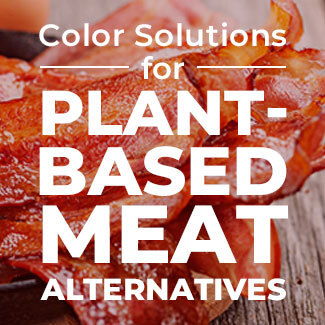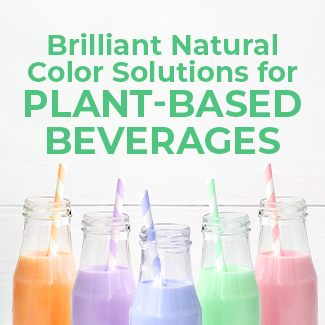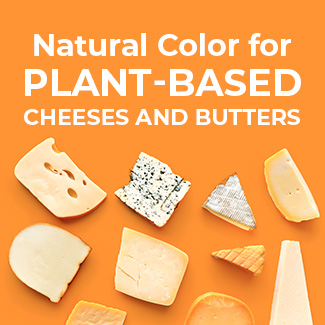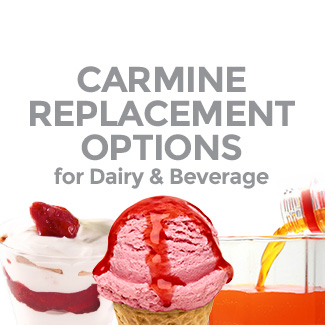Say Cheese with Natural Colors!
Food Color: A Critical Factor of Success for Dairy & Plant-Based Cheese Offerings
Processed and plant-based cheese are both rapidly growing categories. Innovation is a key goal for brands to keep up with consumer expectations, and color can support the development process and enhance the consumer experience!
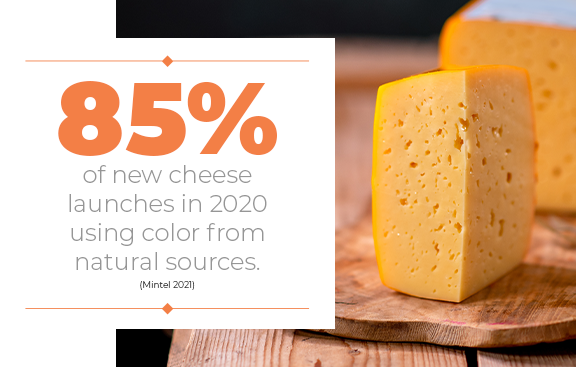
First, it’s important to think about what consumers expect from cheese and cheese-flavored products. Shades of yellow and orange instantly suggest bold flavor and the cheesy goodness of cheddar, and brands can use this to amplify desired flavor profiles. Whether you are innovating in plant-based or dairy cheese, clean labels are considered the category norm, with 85% of new launches in 2020 using color from natural sources (Mintel 2021).
Opportunities for Cheesy Innovation
Brands looking to innovate can start with new colors, flavors, and formats. Developers tasked with updating a current product lineup may move to simplify ingredient statements with clean label colors, or they may look for more efficient solutions to achieve similar shades.
For formulators and developers, the obvious next question is: so how do I get to the bold shades consumers want in cheese products efficiently? Here are some technical solutions for the most popular shades that consumers will find cheesy on the eyes…
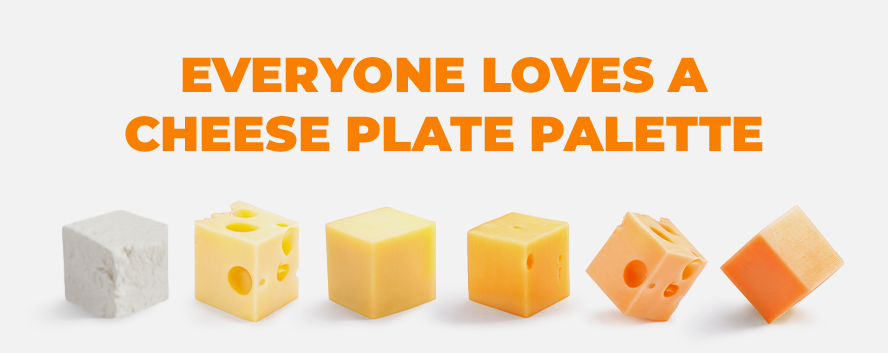
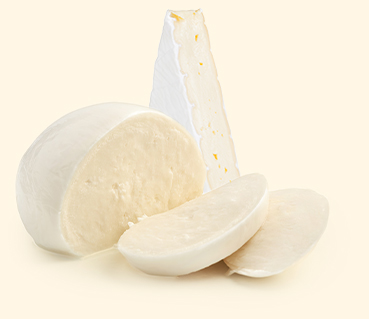
Shade Target:
White or off-white, Mozzarella, Brie
Solution:
Titanium dioxide provides bright white shades and strong opacifying qualities. For developers working with “clean label” restrictions, Avalanche Ultra NB is a botanically based natural color technology designed to give opacity in applications with mid-to-high water activity as well as strong whitening properties with good heat, light, and pH stability, making it an excellent solution for soft white cheese applications!
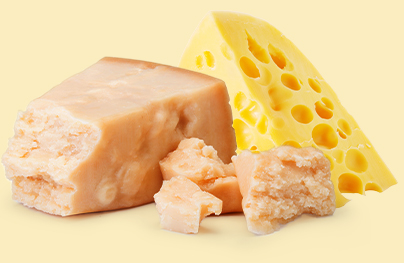
Shade Target:
Pale to darker yellow, Parmesan, Swiss
Solution:
Sienna™ imparts cost-effective yellow shades with a clean label of “Fruit Juice (color)”. With strong heat, light, and pH stability, Sienna sidesteps common concerns developers face with some natural color sources like turmeric.
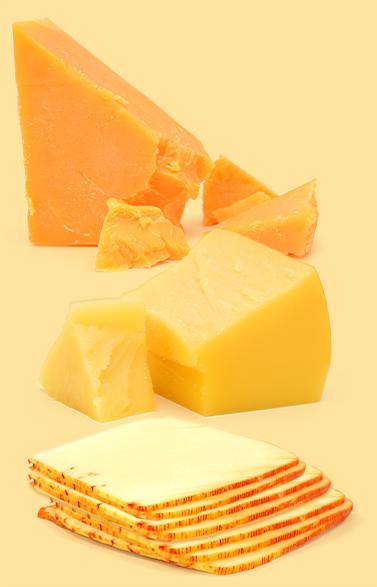
Classic to darker orange, Cheddar, Colby, Muenster
Solution:
Mother Nature offers several different options for bold oranges in cheese applications. Beta Carotenes cover a range of shades in the orange family without unwanted flavor off-notes.
Solution:
Paprika is an increasingly popular choice for the deep orange hue it imparts as an excellent shade match for classic strong cheddar, especially at lower usage rates. Its stability is an asset for products that undergo heat processing.
Solution:
Many brands choose Annatto for cheese applications in this color family. Although “pinking” can be an issue, vertical integration gives Sensient’s Annatto supply chain security. Through the Seed-to-Shelf program, Sensient agronomists have made this crop a cost-effective natural solution for our customers.
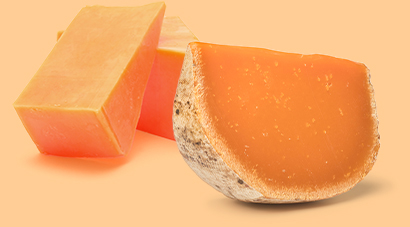
Shade Target:
Dark orange to red, Red Leicester, Mimolette
Solution:
Paprika offers the most cost-effective and label-friendly solution for these darker orange to red shades in cheese applications. Developers should stay aware of the risk for flavor off-notes when Paprika is used at higher usage rates, but partnership with technical color experts can help mitigate this challenge.
60% OF CONSUMERS SAY THAT THEY ENJOY TRYING ARTISANAL CHEESES
(Mintel 2020)
Taking a closer look at trends from key consumer insights, innovative companies have a myriad opportunities to create colorful new cheese products. Here are a few ideas…
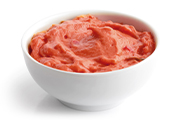
Elevate the Everyday:
Sense of the Intense:
Five-Alarm Ghost Pepper
Cheddar Cheese Dip
Natural Red Color
from Paprika

Active Consumerism:
Food as Prescription:
Relaxing Lavender Honey Goat Cheese Roll
Natural Purple Color
from Vegetable Juice
Comparing Solutions for Plant-Based Versus Traditional Cheese
One of the biggest differences between traditional dairy and plant-based alternatives is that plant-based cheese products are not tied to the standards of identity that traditional cheeses are, which allows for more variations in the formulation and processing parameters. This has also allowed food scientists more creative freedom on the ingredients they can incorporate into non-dairy cheeses.
The botanical solutions outlined above will work beautifully for plant-based or vegan cheeses, and I am always happy to discuss the details of specific projects and troubleshoot natural color formulation. Understanding the way the ingredients are incorporated, the oil-to-water ratio, and the base flour, starch, or protein source becomes critical to the success of achieving plant-based cheeses that meet the visual expectations of standard cheeses.
Get Cheesy with Natural Colors
There are endless possibilities for developers and brands to unleash the power of nature’s true colors in cheese applications. If you are ready to get started with one of the natural colors I discussed above, request a sample today! If you still have questions about natural colors in traditional cheeses or non-dairy alternatives, my team and I would love to help.





